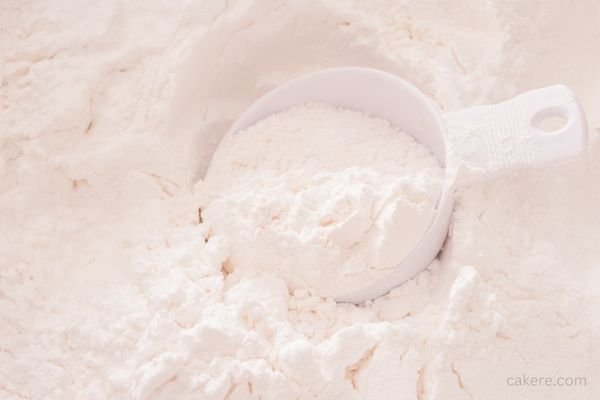All-purpose flour is a versatile ingredient that can be used to make a variety of baked goods. From cakes and cookies to bread and pastry, the possibilities are endless.

All-Purpose Flour: What Is It?
All-purpose flour is a type of wheat flour that is commonly used in baking. It is made from a blend of hard and soft wheat, which gives it a protein content of around 10-12%. This protein content is what makes all-purpose flour suitable for a wide range of baked goods.
The Science of Baking with All-Purpose Flour
When all-purpose flour is mixed with liquid and other ingredients, the proteins in the flour form gluten. Gluten is what gives baked goods their structure and texture. However, too much gluten can result in a tough, chewy texture, while too little gluten can result in a crumbly texture. The protein content of all-purpose flour is just right for achieving the ideal texture in most baked goods.
Baked Goods You Can Make with All-Purpose Flour
Cakes
All-purpose flour is the most common flour used in cake baking. It produces a tender, moist crumb and a soft texture. Layer cakes, sheet cakes, and cupcakes all use all-purpose flour as their base.
Cookies
All-purpose flour is also commonly used in cookie baking. It produces a chewy texture and a crispy edge. Chocolate chip cookies, oatmeal cookies, and sugar cookies all use all-purpose flour.
Bread
All-purpose flour can be used to make bread, but it will result in a less chewy texture than bread made with bread flour. However, all-purpose flour can be combined with bread flour to create a texture that is both chewy and tender.
Pastry
All-purpose flour is used to make many types of pastry, including pie crusts, tart shells, and puff pastry. It produces a flaky, tender texture that is perfect for these delicate pastries.
Pancakes and Waffles
All-purpose flour is the most common flour used in pancake and waffle recipes. It produces a fluffy texture that is perfect for these breakfast favorites.
Pie Crust
All-purpose flour is the most common flour used in pie crust recipes. It produces a tender, flaky crust that is perfect for fruit pies, custard pies, and savory pies.
Biscuits and Scones
All-purpose flour is commonly used in biscuit and scone recipes. It produces a tender, flaky texture that is perfect for these breakfast treats.
Muffins and Quick Breads
All-purpose flour is used in many muffin and quick bread recipes. It produces a tender crumb and a soft texture. Banana bread, zucchini bread, and blueberry muffins all use all-purpose flour.
Pizza Dough
All-purpose flour can be used to make pizza dough, but it will result in a less chewy texture than pizza dough made with bread flour. However, all-purpose flour can be combined with bread flour to create a texture that is both crispy and chewy.
Tips for Baking with All-Purpose Flour
- Measure accurately: Use measuring cups or a digital kitchen scale to ensure that you’re using the right amount of flour. Too much flour can result in dry, dense baked goods, while too little flour can result in a flat, undercooked texture.
- Sift the flour: Sifting the flour before measuring can help to remove any lumps and ensure that it’s evenly distributed in the recipe.
- Don’t overmix: Overmixing the batter or dough can result in too much gluten formation, which can lead to a tough texture. Mix just until the ingredients are combined.
- Use room temperature ingredients: Using room temperature ingredients can help them to mix together more easily and create a better texture in the baked goods.
- Use the right type of flour: While all-purpose flour is versatile, some recipes may require a specific type of flour, such as bread flour or cake flour. Be sure to use the correct type of flour for the recipe.
- Store flour properly: Store all-purpose flour in an airtight container in a cool, dry place to prevent it from absorbing moisture and becoming rancid.
FAQs
Yes, you can use all-purpose flour in place of bread flour, but the texture may not be as chewy as bread made with bread flour alone.
No, all-purpose flour contains gluten and is not suitable for gluten-free baking.
All-purpose flour can be stored for up to six months in an airtight container in a cool, dry place.
Yes, you can use self-rising flour instead of all-purpose flour, but you may need to adjust the other ingredients in the recipe to account for the leavening agents in the self-rising flour.
Conclusion
All-purpose flour is a versatile ingredient that can be used to make a wide variety of baked goods. Whether you’re making cakes, cookies, bread, or pastry, all-purpose flour can provide the perfect texture and structure for your baked goods.
By following a few tips and tricks, you can achieve the best results when baking with all-purpose flour.
